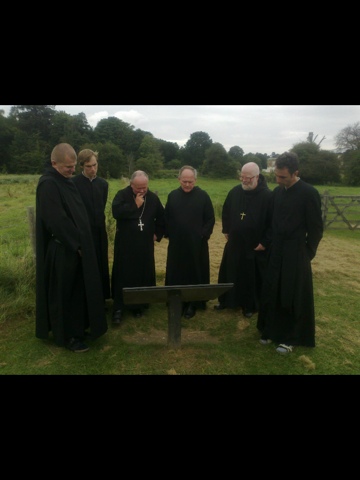We offer our prayers for the Holy Father's visit to his Apostolic Journey to this group of diverse local churches.
BEIRUT: A CITY, FIVE DIOCESES AND AN APOSTOLIC VICARIATE
Vatican City, 13 September 2012 (VIS) - [Today] Benedict XVI is due to begin his twenty-fourth apostolic trip abroad, taking him to Lebanon where, in the country's capital city of Beirut on Sunday, he is due to sign the Post-Synodal Apostolic Exhortation of the Special Assembly for the Middle East of the Synod of Bishops, which took place in the Vatican in October 2010.
The name of Beirut is thought to be Canaanite in origin (bis'rot, the plural of bir meaning a well, a reference to the water tables under the city). The city is mentioned in Egyptian chronicles of the second millennium BC and became famous for the activities of Phonecian sailors and merchants. In the year 14 BC it obtained the status of Roman colony and took the name of Julia Augusta Felix Berytus. Destroyed by an earthquake and tidal wave in 551 AD, the city was in ruins when the Muslims arrived in 635. It was conquered by the Crusaders in 1110 and, following their definitive expulsion in 1229, passed under the control of the Mameluks, becoming an important regional port for the spice trade with the Italian Maritime Republics of Venice and Genoa.
The city was occupied by the Ottomans in 1516 and in subsequent centuries its population grew steadily due to its commercial importance. Following the massacres in Mount Lebanon in 1860 the city witnessed a massive influx of Christian refugees. Pacification, brought about by the Great Powers, was followed by the arrival of Protestant missionaries (from Great Britain, the United States and Germany) and Catholic missionaries (above all, from France). The American Protestants founded the American University of Beirut in 1866, while the Jesuits established the Universite Saint-Joseph in 1881. Thanks to the development of printing in Arabic, English and French, Beirut became a hub for journalism and publishing in the Arab world.
At the end of World War I, with the fall of the Ottoman Empire, Lebanon fell under the French mandate. It gained independence in 1943 and, thanks to a prevailing atmosphere of intellectual openness and economic liberalism, became a regional centre for trade, business, finance and tourism, gaining the sobriquet of the "Switzerland of the Middle East". The expulsion of the Palestine Liberation Organisation from Jordan in 1970 was a key moment in the country's history, as the organisation's political and military centre moved to Lebanon where it became a catalyst for the tensions between the various religious communities. The Civil War between 1975 and 1991 wreaked widespread destruction on the economy and infrastructures.
The scale of the destruction meant that the centre of the city had to be almost completely rebuilt. In the absence of an official census, it is estimated that the inhabitants of "Greater Beirut" currently number around 1.5 million, slightly less than half the population of the entire country.
Beirut has five dioceses: Beirut of the Maronites (episcopal see since 1577), an archieparchy with some 232,000 faithful under the care of Archbishop Paul Youssef Matar. Beirut of the Greek-Melkites (dating from the fourth century) and Jbeil of the Greek-Melkites (suburbicarian 1881), a metropolitan see with 200,000 faithful under Archbishop Cyril Salim Bustros. Beirut of the Armenians (1928-1929), metropolitan see and patriarchal eparchy of Cilicia of the Armenians, serving 12,000 faithful and led by His Beatitude Nerses Bedros XIX Tarmouni, patriarch of Cilicia of the Armenians. Beirut of the Chaldeans (1957) with 19,000 faithful under Bishop Michel Kassarji. Beirut of the Syrians (1817), eparchy of the patriarchal church of Antioch of the Syrians with 14.500 faithful under the care of His Beatitude Ignace Youssif III Younan, patriarch of Antioch of the Syrians.
The city also has one apostolic vicariate, that of Beirut of the Latins which has 10,000 faithful and the vicar of which is Archbishop Paul Dahdah O.C.D.










